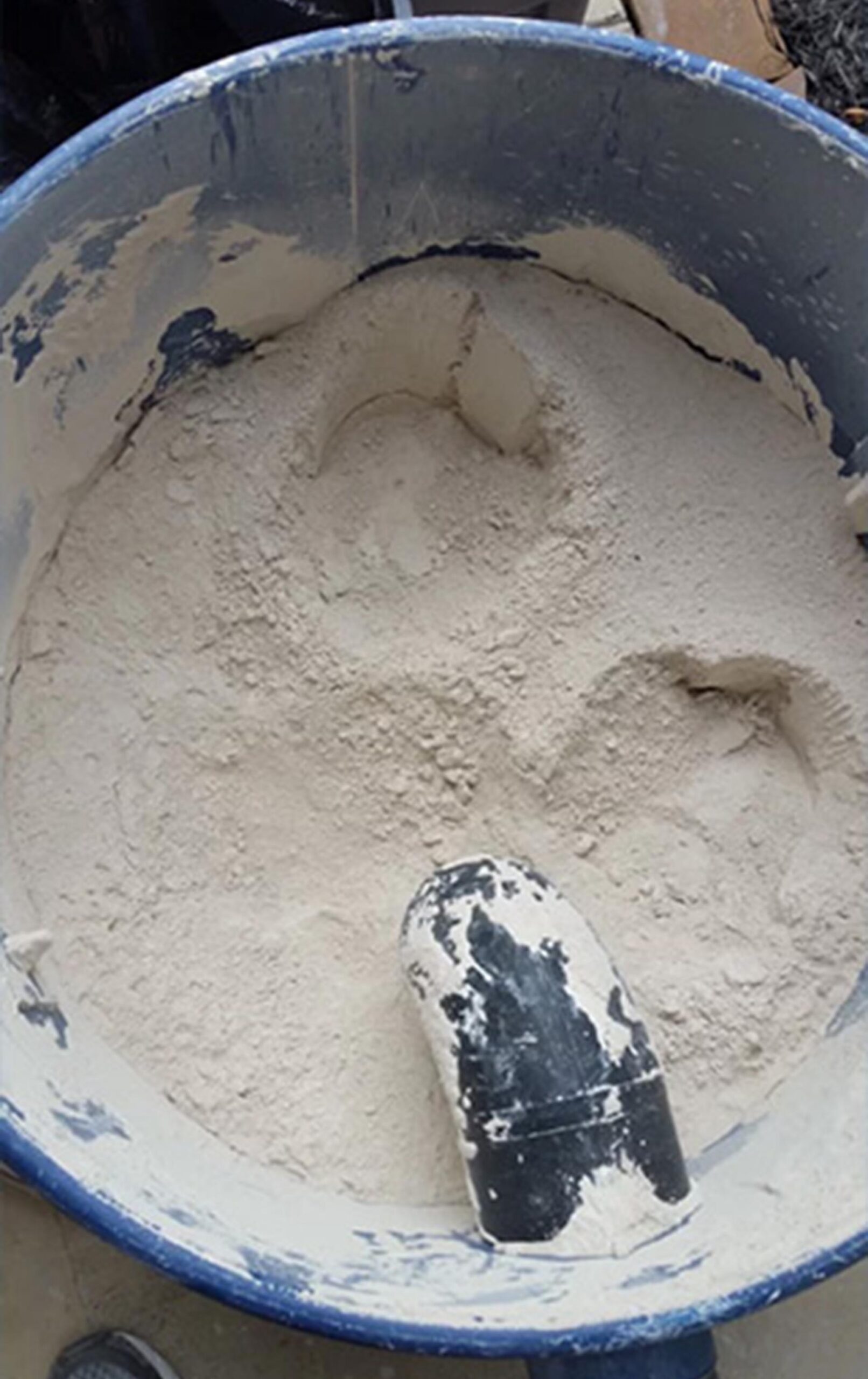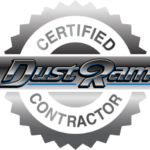No ordinary dust
Health hazards of crystalline silica dust
Silica Dust Exposure is Detrimental to Your Health
Crystalline Silica is a mineral abundantly found in the earth’s crust. It is most commonly found in quartz, and is a component of concrete, sand, stone, grout, brick and mortar. You may recall finding in a small pouch labeled “Silica” inside the packaging of a box to absorb moisture with a stern warning not to ingest it. During the traditional removal of tile and thinset, crystalline silica dust is released into the air.
According to the Occupational Safety and Health Administration (OSHA), crystalline silica is classified as a human lung carcinogen (cancer causing). Prolonged or acute inhalation causes a respiratory disease called Silicosis. Silicosis is a chronic obstructive pulmonary disease where the crystalline silica becomes lodged in the small sacs of the lungs called alveoli. The dust causes scar tissue to form and restricts the ability of the lungs to properly take in and process oxygen, as well as blocks the exchange of gas at the cellular level.
According to the United States Department of Labor, “occupational exposure to crystalline silica often occurs as part of common workplace operations involving, cutting, sawing, drilling, grinding, blasting, and crushing of concrete, brick, block, rock, and stone products (such as in construction work)….These types of exposures can lead to the development of disabling and sometimes fatal lung diseases, including silicosis and lung cancer. Processes historically associated with high rates of silicosis include sandblasting, sand-casting foundry operations, mining, tunneling, cement cutting and demolition, masonry work and granite cutting.”

Inhaling Tile Dust is Extremely Dangerous
Don’t Bring Respirable Crystalline Silica Home!
Crystalline silica dust is so hazardous that the National Institute for Occupational Safety (NIOSH) recommends…”workers avoid bringing silica dust home from work by:
Changing into disposable or washable work clothes at the worksite.
Parking your car where it will not be contaminated with silica.”
Showering (if possible) and changing into clean clothes before leaving the worksite to prevent contamination of other work areas, cars and homes.
Traditional tile removal is being performed above. Notice the insane amounts of tile dust being released back into the air. DustRam® NEVER exposes you to the dust. We capture the dust immediately at production and never release it back into the air. We dispose of the dust far away from your home. Make sure the contractor you are hiring is DustRam® certified for a Truly dust-free result.
We are 50 under OSHA’s permissible exposure limit of silica dust
OSHA Silica Standard
Crystalline Silica is a mineral abundantly found in the earth’s crust. It is most commonly found in quartz, and is a component of concrete, sand, stone, grout, brick and mortar. You may recall finding in a small pouch labeled “Silica” inside the packaging of a box to absorb moisture with a stern warning not to ingest it. During the traditional removal of tile and thinset, crystalline silica dust is released into the air.
According to the Occupational Safety and Health Administration (OSHA), crystalline silica is classified as a human lung carcinogen (cancer causing). Prolonged or acute inhalation causes a respiratory disease called Silicosis. Silicosis is a chronic obstructive pulmonary disease where the crystalline silica becomes lodged in the small sacs of the lungs called alveoli. The dust causes scar tissue to form and restricts the ability of the lungs to properly take in and process oxygen, as well as blocks the exchange of gas at the cellular level.
According to the United States Department of Labor, “occupational exposure to crystalline silica often occurs as part of common workplace operations involving, cutting, sawing, drilling, grinding, blasting, and crushing of concrete, brick, block, rock, and stone products (such as in construction work)….These types of exposures can lead to the development of disabling and sometimes fatal lung diseases, including silicosis and lung cancer. Processes historically associated with high rates of silicosis include sandblasting, sand-casting foundry operations, mining, tunneling, cement cutting and demolition, masonry work and granite cutting.”

DustRam® Contractors Have Air Quality Tests to Prove DUST FREE
Hire a Contractor That Can PROVE How Dust Free They Really Are.
Ask your contractor for air quality tests to prove they are TRULY dust free.
When you hire a contractor to remove your tile or stone floor, it means that someone will be chipping away the ceramic, porcelain or stone tiles, and the thin set and grout that bind it to the concrete sub floor. The contractor typically will use a jack hammer or a chipping hammer to scrape away the concrete based thin set, a process that creates static and may cause the dust to rise to your ceilings and walls.
All of these normal methods create a permeating, re-appearing coating of crystalline silica dust in your home environment, exposing your family, elder parents, infants, children and pets to the effects of the airborne dust contaminants. Once this dust gets into your HVAC system, it recirculates and repeats’ the exposure to this dangerous dust. Even if the contractor puts plastic all over your house in an attempt to cover your vents and air intake, it does not create an air-tight seal. Also consider what will happen when the contractor removes the plastic. All the dust that has settled will now become airborne. Once it is airborne, it will be inhaled, continually recirculated over and over again, lengthening the time you are exposed to the dust hazard.
Cutting Edge Tile Removal uses the patented DustRam® System Equipment to remove your tile or stone floor, as well as the thinset and grout, Dust Free! No other contractor in the Houston, TX area is certified in the use of this advanced system of tile removal tools and the special processes that allow the crystalline silica dust to be captured at the source in every step of the removal process.
